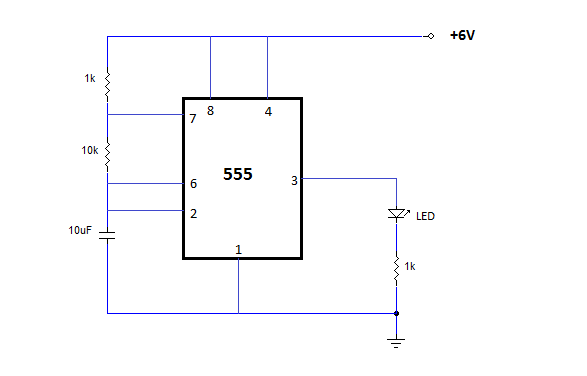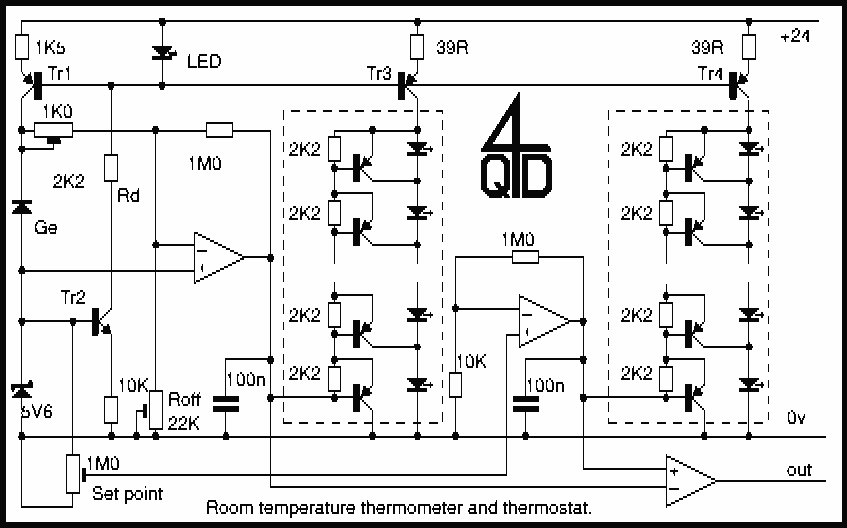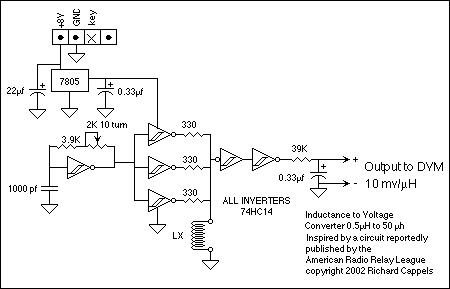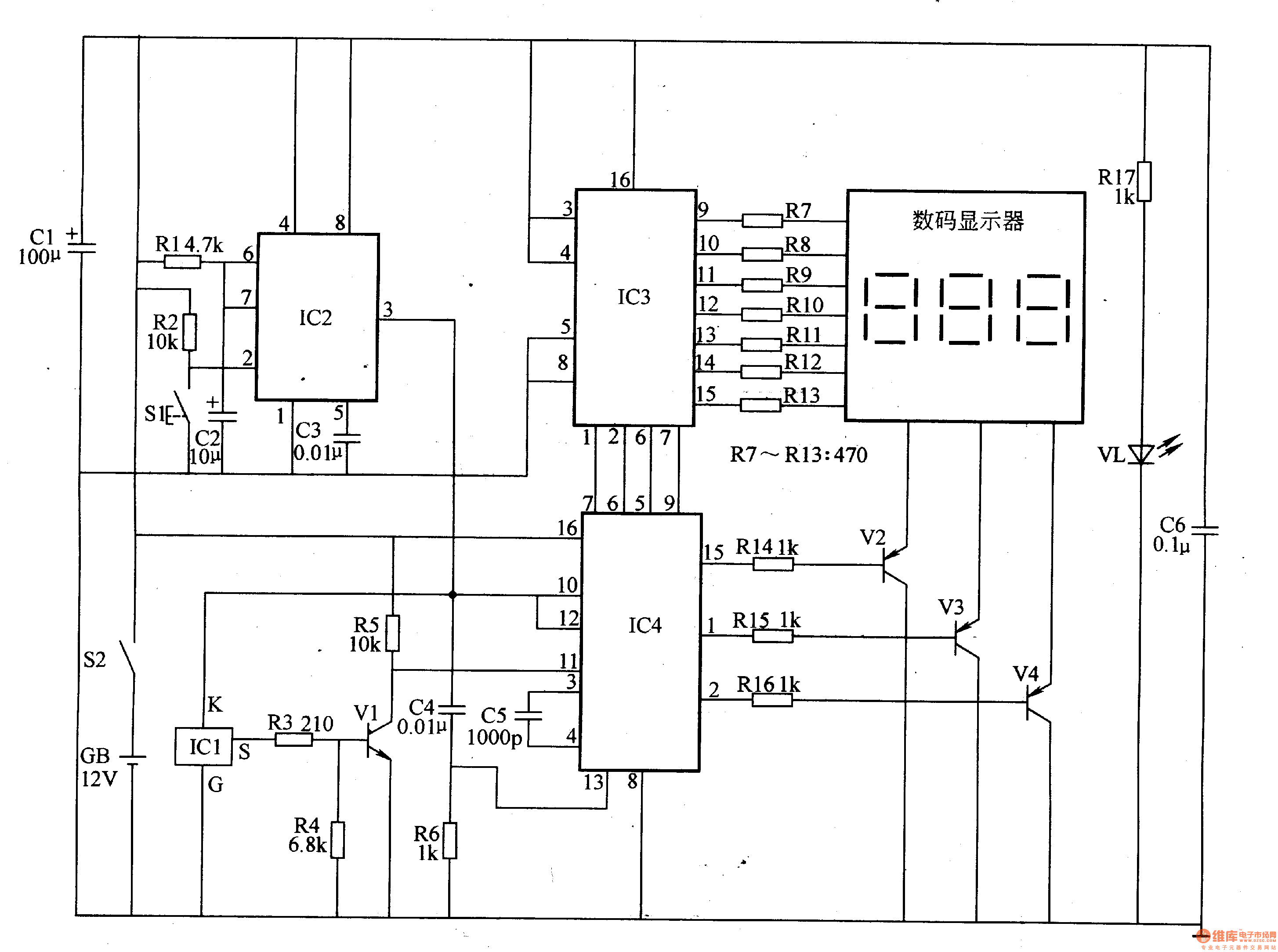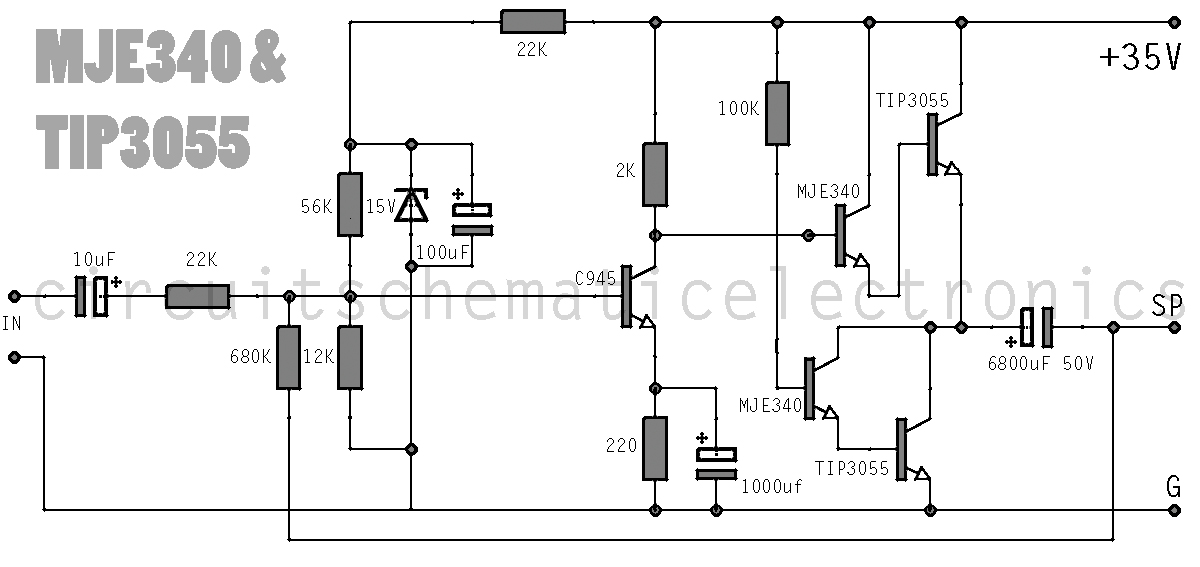
Simple Soil Moisture Meter with 741
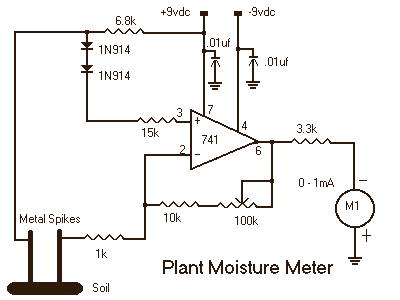
Stick the metal probes into a freshly watered plant and adjust R5 for a mid-scale meter deflection. The meter will monitor the soil wetness and the meter will indicate whether it is too moist or too dry. This circuit uses a dual power supply which could be created by two 9-volt batteries.
The described circuit functions as a soil moisture sensor, utilizing metal probes that are inserted into the soil of a plant. The probes act as conductive sensors that measure the resistance of the soil, which varies with moisture content. When the soil is adequately watered, the resistance decreases, allowing more current to flow through the circuit, which can be detected by the attached meter.
The circuit is powered by a dual power supply configuration, achieved by using two 9-volt batteries. This arrangement not only provides sufficient voltage for the circuit operation but also allows for a positive and negative voltage rail, which can be beneficial for certain components such as operational amplifiers or analog meters that require a bipolar supply.
The adjustable resistor R5 is crucial for calibrating the meter's response. By turning R5, the user can set the meter to indicate a mid-scale deflection, which serves as a reference point for determining the moisture level. If the meter reads above this point, it indicates that the soil is too moist, while readings below suggest that the soil is too dry.
The circuit may include additional components such as a potentiometer for fine-tuning the sensitivity and possibly a diode to protect against reverse polarity connections. A visual indicator, such as an LED, could also be integrated to provide a quick visual reference of the soil moisture status.
Overall, this simple yet effective soil moisture monitoring circuit allows for real-time feedback on the hydration needs of plants, aiding in their care and maintenance.Stick the metal probes into a freshly watered plant and adjust R5 for a mid-scale meter deflection. The meter will monitor the soil wetness and the meter will indicate whether it is to moist or to dry. This circuit uses a dual power supply which could be created by two 9 volt batteries. 🔗 External reference
The described circuit functions as a soil moisture sensor, utilizing metal probes that are inserted into the soil of a plant. The probes act as conductive sensors that measure the resistance of the soil, which varies with moisture content. When the soil is adequately watered, the resistance decreases, allowing more current to flow through the circuit, which can be detected by the attached meter.
The circuit is powered by a dual power supply configuration, achieved by using two 9-volt batteries. This arrangement not only provides sufficient voltage for the circuit operation but also allows for a positive and negative voltage rail, which can be beneficial for certain components such as operational amplifiers or analog meters that require a bipolar supply.
The adjustable resistor R5 is crucial for calibrating the meter's response. By turning R5, the user can set the meter to indicate a mid-scale deflection, which serves as a reference point for determining the moisture level. If the meter reads above this point, it indicates that the soil is too moist, while readings below suggest that the soil is too dry.
The circuit may include additional components such as a potentiometer for fine-tuning the sensitivity and possibly a diode to protect against reverse polarity connections. A visual indicator, such as an LED, could also be integrated to provide a quick visual reference of the soil moisture status.
Overall, this simple yet effective soil moisture monitoring circuit allows for real-time feedback on the hydration needs of plants, aiding in their care and maintenance.Stick the metal probes into a freshly watered plant and adjust R5 for a mid-scale meter deflection. The meter will monitor the soil wetness and the meter will indicate whether it is to moist or to dry. This circuit uses a dual power supply which could be created by two 9 volt batteries. 🔗 External reference
